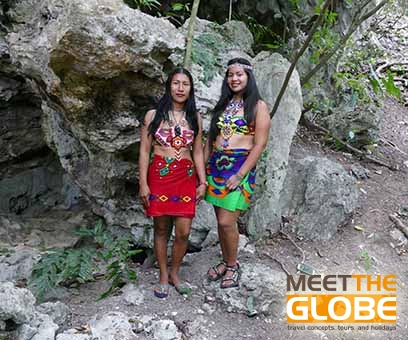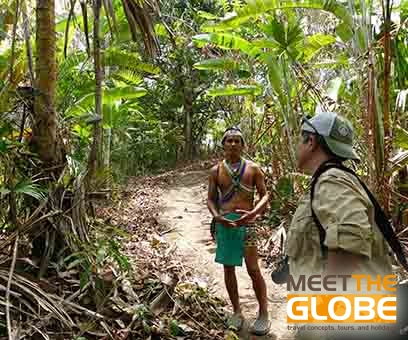

 Embera
Embera
The Embera, also called Choco, are an Amerindian indigenous people which are located in some areas of the Pacific of Colombia, eastern Panama and northwestern Ecuador. Their overall number is considered to be about 68,000. Some historians explain that Embera literally means: "The corn people", however, it can also be translated as "Good man" or "Good friend".
The Embera classify themselves according to their living conditions, such as "Dobida", an inhabitant of the river banks; "Pusabida", an inhabitant of the maritime (Pacific) coasts; "Oibida" inhabitant of the Andean forests; "Eyabida" inhabitant of the deforested areas.
Despite being far from many modern customs, the Embera are monogamous and incest is prohibited. The father is the main authority, without underestimating the mother who also enjoys great respect. The Embera divide their functions into the community and family household. Men are in charge of heavy work, such as planting and gathering food, hunting animals and building houses, while women are in charge of household chores and care for the family. But they also contribute to the home economy making crafts for sale to tourists who visit them.
One highly significant aspect in the life of this wonderful indigenous group is body tattoos. The natural ink of the Jagua plant provides them with colors such as black and dark blue, which they use to paint their complete body and face, although others paint various geometric figures. This practice is not linked to the age of the indigenous people, but as protection from the sun, fungi and insects, so infants from a month old are given their first temporary Jagua tattoos.
The traditional clothing of the Embera is rather sparse, but very colorful and therefore always recognisable from a distance. They wear it for all activities in the village. The men use a loincloth, which they call Guayuco, meaning "cover" in Embera. The men also decorate their torso with pearl necklaces of different colors. When they leave the village, men also wear pants and T-shirts. For their part, women use a colorful fabric which they wrap around their hips as a skirt in everyday life. This is called Paruma. The use of pearls for decoration is not limited to men. Women also often wear earrings, necklaces and bracelets that are made with plastic beads by themselves. Both, men and women, use headwear and silver jewelry for rituals and ceremonies.
The modern world has created problems for indigenous groups and the Embera are not an exception. An example of this has been the invasion by settlers. This colonisation has caused destruction to the forests inhabited by the Embera. In some cases, their territory has been absorbed by the coffee plantations, where many members of the tribe have had to look for work in order to survive the changes in life that these invaders have created. For these reasons, the survival and maintenance of their traditions never has been an easy task.
For some Embera communities, such as the ones that remain in the Darien Province in Panama, the new government management has caused massive destructions on their traditional way of life, since they have been prohibited from hunting animals, as well as agricultural activities. Since then, tourism has been their only straw. They secure their livelihood by selling handicrafts and offering tours to get to know their villages and their way of life.
























